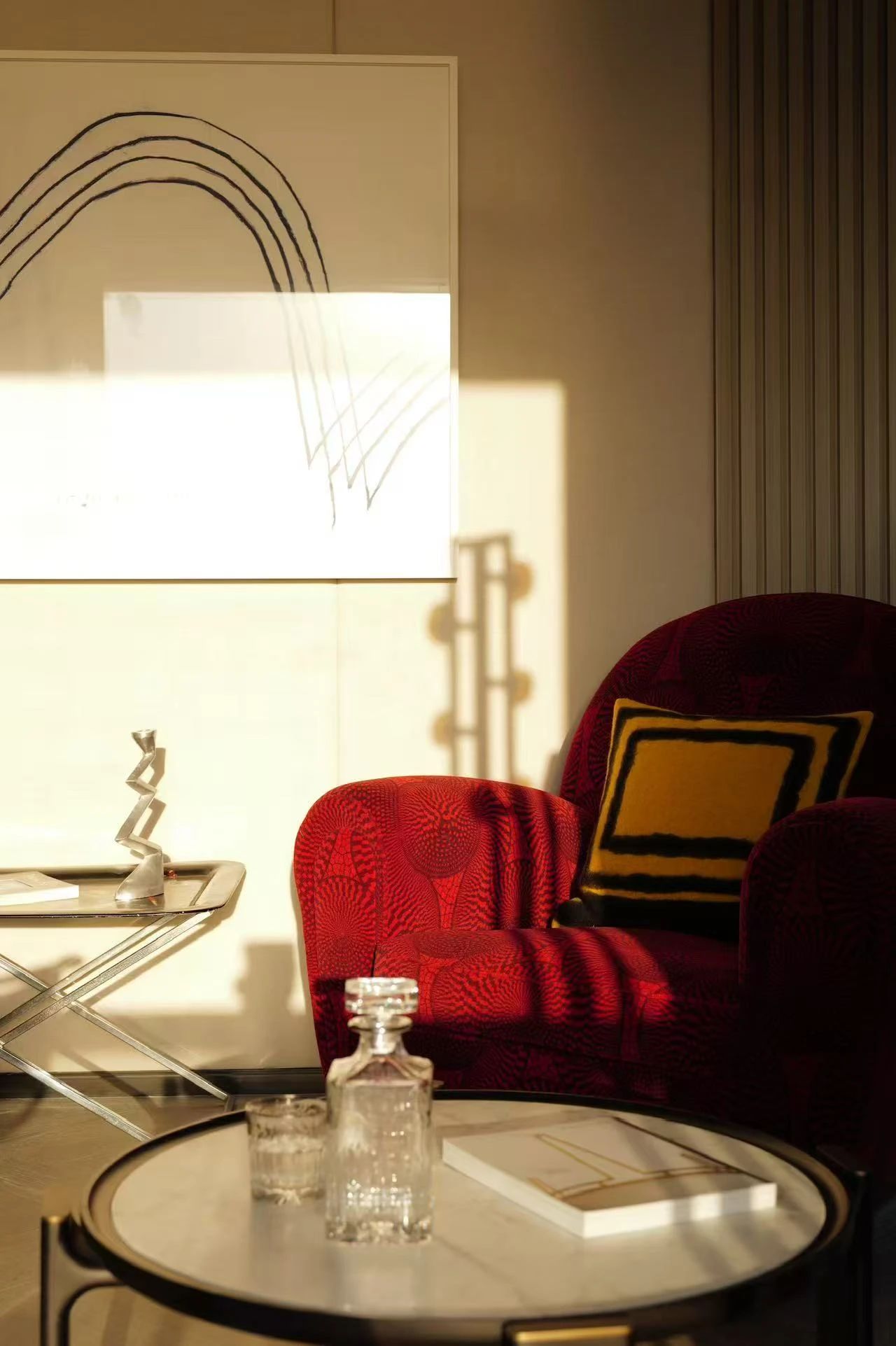Atrium Amras Zechner - Zechner
2013-11-18 01:00
架构师提供的文本描述。简单地说,就是在Innsbruck外围规划一座能耗低的办公大楼。由于靠近因斯布鲁克奥斯特交通枢纽,该地点作为通往城市的大门运行。
Text description provided by the architects. The brief was to plan an office building with low energy consumption on the periphery of Innsbruck. The site operates as a gate to the city, due to its proximity to the Innsbruck Ost transport hub.
该建筑有一个几乎正方形的地面平面,这是由于发展的布局,并被设计为一种中庭类型。一楼从周围的街道水平上升约1米,以避免地下停车场与地下水接触。入口,是连接到邻近的建筑,其中包含一家具店,也是通过这种方式,以建立一个共享的前厅。因此,办公楼的正门朝向这一前厅,此外,立面在两层楼上旋转,以标志入口并创造一个屋顶。通往行人前厅的通道是通过斜坡、宽楼梯和轮椅坡道。进入室内是通过屋顶的内部区域,这延伸到多层。类似露天看台的楼梯,从一楼的入口门厅一直延伸到一楼,在那里有一个多用途的小活动和会议区域。“中庭”这个词启发了建筑物的名称,而中庭也提供了结构内的重要空间,以促进交流和互动。
The building has an almost square ground plan, resulting from the layout of the development, and was designed as a type of atrium. The ground floor is raised by approximately 1m from the surrounding street level to avoid the underground parking coming into contact with groundwater. The entrance, which is connected to the neighbouring building that contains a furniture store, is also raised in this way to create a shared forecourt. The main entrance of the office building is therefore oriented towards this forecourt, and in addition the facade is rotated over two floors to mark the entrance and create a roof. Access to the pedestrian forecourt is via inclines, a wide staircase and a wheelchair ramp. Access to the interior is through the roofed inner area, which extends over multiple floors. Stairs that resemble bleachers lead from the entrance foyer on the ground floor up to the first floor, where a multipurpose area for small events and meetings is located. The word ‘atrium’ inspires the building's name, and the atrium also provides important spaces within the structure to facilitate communication and interaction.
在五层楼的底层有商业楼层,包括一家药店.办公空间与灵活的配置在上面,以及工作室和医生的做法。进入单位的通道是类似拱廊的走廊。位于中庭周围的办公空间被组织起来,提供不同大小的出租单元的可变布局。在中庭的互动空间旁边,屋顶露台为建筑内雇用的人提供了另一个半私人的会合点。顶层的大型露台也强调了周围山脉和南面安布拉城堡的景观。
On the ground floor of the five-storey building there is commercial floorspace, including a pharmacy. Office space with flexible configurations is located above, as well as studios and doctors' practices. Access to the units is via arcade-like corridors. The office spaces located around the atrium are organised to provide variable layouts of differently sized rental units. Alongside the interaction space of the atrium, a roof terrace provides another semiprivate meeting point for people employed within the building. The large terrace on the top floor also emphasises the views that the site provides of the surrounding mountains and Ambras Castle to the south.
立面由预制混凝土构件构成,每个构件的高度为一层楼的高度。它们创建了一个由两个不同大小的窗口开口组成的非均匀网格,它们交替形成一个不同的模式。窗户是一个组合设计的苗条轮廓和防晒系统安装在中间,以保护免受风。每个楼层正面元素的轻微偏移会产生光和暗的相互作用,标记每一层的边缘,并使人们能够阅读地板。由于表面粗糙度的差异,增强了光和暗的对比度。粗糙、无光泽的砂岩色混凝土表面与光滑的反射玻璃元素形成对比.建筑的外部外壳是建筑的一个独特的部分,它成为一个企业的身份和一个图标的项目。外墙是承重的,由现场混合混凝土建造,以避免在立面附近使用支架。大型护栏防止火势从地面蔓延到另一层。两个核心加固建筑框架,并容纳楼梯和竖井。天花板是无应力钢筋混凝土,没有托梁。上面的天花板是用粘合层合板建造的,用作箱梁.
The facade is constructed from precast concrete components, each the height of an individual storey. These create a nonuniform grid composed of two differently sized window openings that alternate to form a varied pattern. The windows are a composite design with slim profiles and sun protection systems fitted in the middle for protection from the wind. The slight offset of the facade elements at each storey creates an interplay of light and dark, marks the edges of each level and makes it possible to read the floors. The contrast of light and dark is intensified by differences in the roughness of the surfaces. The rough and matt sandstone-colour concrete surfaces are contrasted with smooth reflective glass elements. The exterior shell of the building is such a distinctive part of the structure that it becomes a corporate identity and an icon for the project. The exterior walls are load bearing and are constructed from site-mixed concrete, to avoid the use of supports near the facade. The large parapets prevent fire spreading from floor to floor. Two cores reinforce the building frame, and house the staircases and shafts. The ceilings are unstressed reinforced concrete without joists. The upper ceiling is constructed using glued-laminated boards that function as box girders.
透明和封闭外墙表面的最佳配合,高质量的外保温和玻璃提供余热回收,使建筑的能源效率等级为A级,HWBref为13.6kWh/M2a。办公窗是一种综合设计,具有最佳的建筑物理性能。结构特性允许精益的HVACR设计。与邻近的“Leiner/MPreis”项目一起,在周围建筑物和共用运输系统方面产生了协同增效作用。在共同设计和使用的前厅旁,共用地下停车场的入口和出口减少了私人车辆出入所需的空间。
The optimum mix of transparent and closed exterior wall surfaces, high-quality exterior insulation and glazing provides waste heat recovery that gives the building an energy efficiency class of A+, with HWBref of 13.6 kWh/m2a. The office windows are a composite design that has optimum building physics performance. The structural properties allow a lean HVACR design. With the neighbouring project, ‘Leiner / Mpreis’, synergies were created, both in relation to the surrounding buildings and in shared transport systems. Alongside the jointly designed and used forecourt, shared entrances and exits to the underground parking reduce the space required for private vehicle access.
 举报
举报
别默默的看了,快登录帮我评论一下吧!:)
注册
登录
更多评论
相关文章
-

描边风设计中,最容易犯的8种问题分析
2018年走过了四分之一,LOGO设计趋势也清晰了LOGO设计
-

描边风设计中,最容易犯的8种问题分析
2018年走过了四分之一,LOGO设计趋势也清晰了LOGO设计
-

描边风设计中,最容易犯的8种问题分析
2018年走过了四分之一,LOGO设计趋势也清晰了LOGO设计










































































































